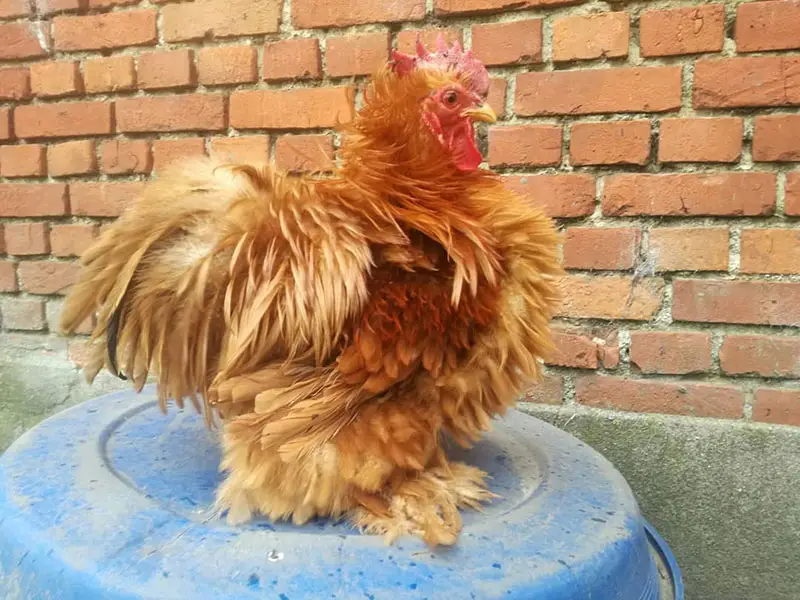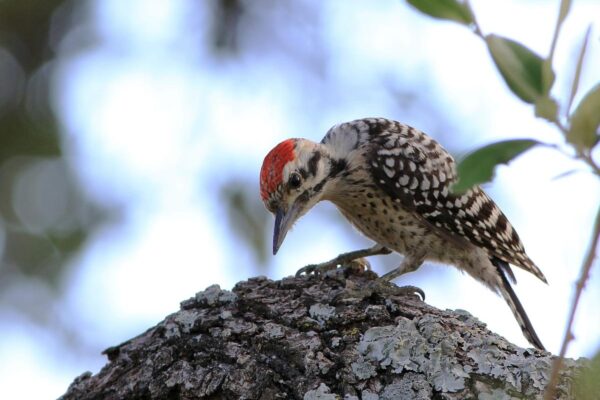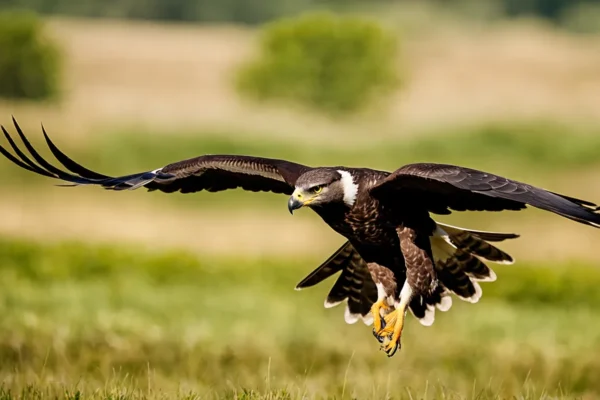Across the globe, chickens are a common domesticated animal that provide humans with eggs, meat, and company. Many people refer to hens as birds informally because of their unique characteristics, such as their feathers and wings. But in terms of science, are chickens really an avian species?
Here’s a brief response to your query in case you’re pressed for time: Indeed, chickens fall within the scientific category of birds. They are related to other bird species via evolution and share many basic anatomical characteristics.
All extant bird groups are members of the Aves biological class, which includes chickens.
We will examine the evolutionary background, anatomical characteristics, and taxonomy categorization of chickens in this essay, which is around 3000 words long. You will discover the precise reason why, according to scientific definitions, biologists and ornithologists regard chickens as entirely avian species.
We’ll look at traits that set chickens apart from their wild ancestors, such as junglefowl, as well as traits that they have in common with other poultry. To highlight their links to other bird groups, their history of domestication and developmental biology will also be discussed.
The Basic Avian Features of Chicken Biology
There are a few fundamental characteristics of birds that set chickens apart in terms of biology. Feathers, lightweight bones, and the ability to fly are examples of these characteristics. Let’s take a closer look at each of these traits:
Birds of Prey
One of the characteristics that most sets birds—including chickens—apart is their feathers. These unique structures have many uses, including flying, protection, and insulation. The exact arrangement of keratin, the protein that makes up feathers, aids in the birds’ ability to regulate body temperature.
Feathers are important for species identification and courting displays in addition to keeping hens warm.
Minimal Weight Skeletons
Lightweight skeletons are another significant feature of chickens. Birds have hollow bones filled with air sacs, unlike mammals. Because of this special adaption, birds can fly more easily because of the lightweight construction.
Additionally, birds with hollow bones are more nimble and effective in the air. Despite not being recognized for their ability to fly, chickens are classified as birds altogether because of their lightweight bones.
Flight Capabilities And Wings
Despite not being recognized for their long-distance flying prowess, chickens are capable of flying because to their wings. The wings of chickens are adapted for brief flights, such as dodging predators or ascending to higher perches.
Even while they may not fly through the skies like swans or eagles, chickens are nevertheless capable of taking to the air when the need arises. Despite their limited ability to fly, their biology as birds depends on it.
The Origins Of Chicken Evolution: A Descendant Of The Junglefowl
Gallus gallus domesticus, the scientific name for chickens, is descended from the wild Red Junglefowl (Gallus gallus). These birds, which are closely related to other junglefowl species in the area, are indigenous to the woods of Southeast Asia.
The several breeds of farmed chicken that exist today are the product of years of careful breeding. Chickens have been domesticated, yet they have retained many of the biological characteristics of their wild forebears.
The vivid plumage and unique sounds of the Red Junglefowl are well-known. For its meat and eggs, it is thought that 7,000–10,000 years ago, prehistoric humans started domesticating these birds. Different chicken breeds with varied physical attributes and features have evolved throughout time as a result of selective breeding.
Certain kinds were cultivated for their flesh, while others were cultivated for their capacity to produce eggs.
The History of Domestication
The chosen characteristics of the junglefowl that were deemed acceptable by humans were part of the domestication process. Behavior, appearance, and reproductive habits changed as a result. In comparison to their wild counterparts, domestic chickens have smaller combs, shorter wings, and less colorful plumage.
In addition, they lay eggs more often and have bigger bodies.
Chickens have been a staple meal for human societies throughout history, supplying meat and eggs. They have also been used in cockfighting, cultural rituals, and religious rites.
With billions of them produced for meat and eggs, hens are now one of the most extensively farmed animals in the world.
You may go to the following websites to learn more about the evolutionary history of chickens:
The Evolution of Chickens on National Geographic
The evolutionary history of chickens sheds light on their biology and taxonomy as well as the important role they have played in human civilization (Smithsonian Magazine, “How the Chicken Conquered the World”).
Taxonomic Scheme for Chicken Classification
A Member Of The Phasianidae Clade
The Phasianidae family includes chickens, whose scientific name is Gallus gallus domesticus. There are many species of game birds in this family, such as partridges, quails, and pheasants. The order Galliformes, which includes terrestrial birds distinguished by their powerful legs and limited flight distances, includes the Phasianidae family.
Chicks are included under the Phasianinae subfamily of the Phasianidae family. Peafowls and turkeys are among the other domesticated birds in this subfamily. With species found in Europe, Asia, Africa, and North America, the Phasianidae family is extensively spread across the planet.
positioned within the Aves class
Chickens fall under the Aves class since they are birds. Warm-blooded animals, birds are distinguished by their beaks, feathers, and capacity for egg laying. The orders that make up the Aves class include Galliformes, which includes chickens, among others.
Because they have been domesticated by humans for hundreds of years, chickens are unusual within the Aves class. They were initially domesticated in Southeast Asia, where it is thought that they descended from wild jungle fowl.
They are among the most popular and numerous domesticated animals in the world today.
You may find out more about the taxonomic categorization of chickens and other birds by visiting reliable sites like the International Union for Conservation of Nature (IUCN) or the Cornell Lab of Ornithology.
Special Features of Chicken Reproduction
Laying Eggs
Laying eggs is one of the most interesting elements of chicken reproduction. Hens, or female chickens, are distinguished by their unique reproductive systems, which enable them to lay eggs. The hen’s ovary is where the egg develops before she starts to produce eggs.
There are two ovaries in a hen, but only one is working.
Egg cells, or ova, grow microscopic within the ovary. The oviduct, a lengthy, winding tube where the egg will continue to grow, receives the fully developed ovum after it is released from the ovary.
If a rooster’s sperm is present, the egg undergoes fertilization as it passes through the oviduct.
After fertilization, the egg travels via the oviduct and continues to develop. The growing embryo is encased in the eggshell during this phase. Ultimately, the fully developed egg is deposited via the hen’s cloaca—the standard orifice used for excretion and reproduction—after around 24 to 26 hours.
It is noteworthy that not every egg laid by chickens undergoes fertilization. Unfertilized eggs, which humans often eat, may be laid by hens. On the other hand, if there is a rooster nearby, the eggs could be fertilized and hatch into chicks.
Evolution Within The Egg
If fertilization occurs after an egg is placed, it may grow into a chick. An intriguing and intricate process occurs during the development of a chicken embryo within the egg. For the growing embryo, the egg supplies all the nutrition and protection it needs.
The embryo begins life within the egg as a blastoderm, which is a tiny, circular collection of cells. These cells proliferate and divide to create diverse tissues and organs throughout time. With the production of limbs, a beak, and feathers, the embryo increasingly resembles a chick as development goes on.
An embryo of a chicken normally develops in around 21 days. To achieve optimal development throughout this period, the egg must be maintained at a certain temperature and humidity level. Mother hens perch on their eggs to provide warmth and protection for this reason.
The chick uses an egg tooth, a tiny protrusion on its beak, to peck its way out of the shell when the incubation period is over. The “hatching” process might take many hours.
After successfully hatching, the chick ventures out into the world to start its path towards maturity.
You may check out the following websites for further details on chicken reproduction:
GardenChickens.com
Chickens at Extension.org
In contrast To Other Bird Groups In Regard To Other Poultry
Poultry birds include chickens, whose scientific name is Gallus gallus domesticus. Any number of tamed birds bred for their meat, eggs, or feathers are included under the general word “poultry.” Turkeys, ducks, and geese are in the same bird family as chickens.
They have comparable features, such wings, feathers, and a beak, and they may lay eggs. But unlike other poultry species, chickens have distinctive qualities and characteristics of their own.
Because of their large egg-laying capability and ability to adapt to many climates, chickens are one of the most popular species of poultry birds. For home and commercial farming, they are cultivated in vast quantities.
Chickens are also raised for their meat, which is eaten all over the globe and is now a staple in many different kinds of cooking.
Variations From Wild Birds
Even though they are of the same family as wild birds like eagles and sparrows, chickens and these other birds vary greatly. It is well known that wild birds can fly great distances, but chickens can only go so far.
This is because throughout thousands of years, chickens have undergone selective breeding that has led to bigger bodies and smaller wing muscles.
The environment and behavior of wild birds differs noticeably from those of chickens. Whereas chickens are domesticated and often maintained in coops or chicken houses, wild birds usually reside in their natural habitats, which include woods, grasslands, or wetlands.
Because of their innate ability to coexist with people, chickens now depend on people for food, water, and shelter.
It is noteworthy that despite being domesticated, chickens nonetheless exhibit several natural bird habits, such dust bathing, scratching, and roosting. These actions should be encouraged in their living environment as they are vital to their wellbeing.
Check out the Cornell Lab of Ornithology or the Audubon Society for further details on the biology and taxonomy of birds.
In conclusion
From their physical features to their shared developmental history and taxonomic categorization with other avian species, chickens are exactly what is meant to be considered birds according to scientific definitions.
From an evolutionary and biological standpoint, chickens are still birds, even if domestication has given them several distinguishing characteristics over their junglefowl forebears.
You may thus appropriately say to yourself, “That’s one remarkable bird!” the next time you see a chicken pecking in the farm.


![What Is Inside A Penguin’s Mouth? [Detailed Guide]](https://birdsology.com/wp-content/uploads/2023/08/Rockhopper2.jpg)



